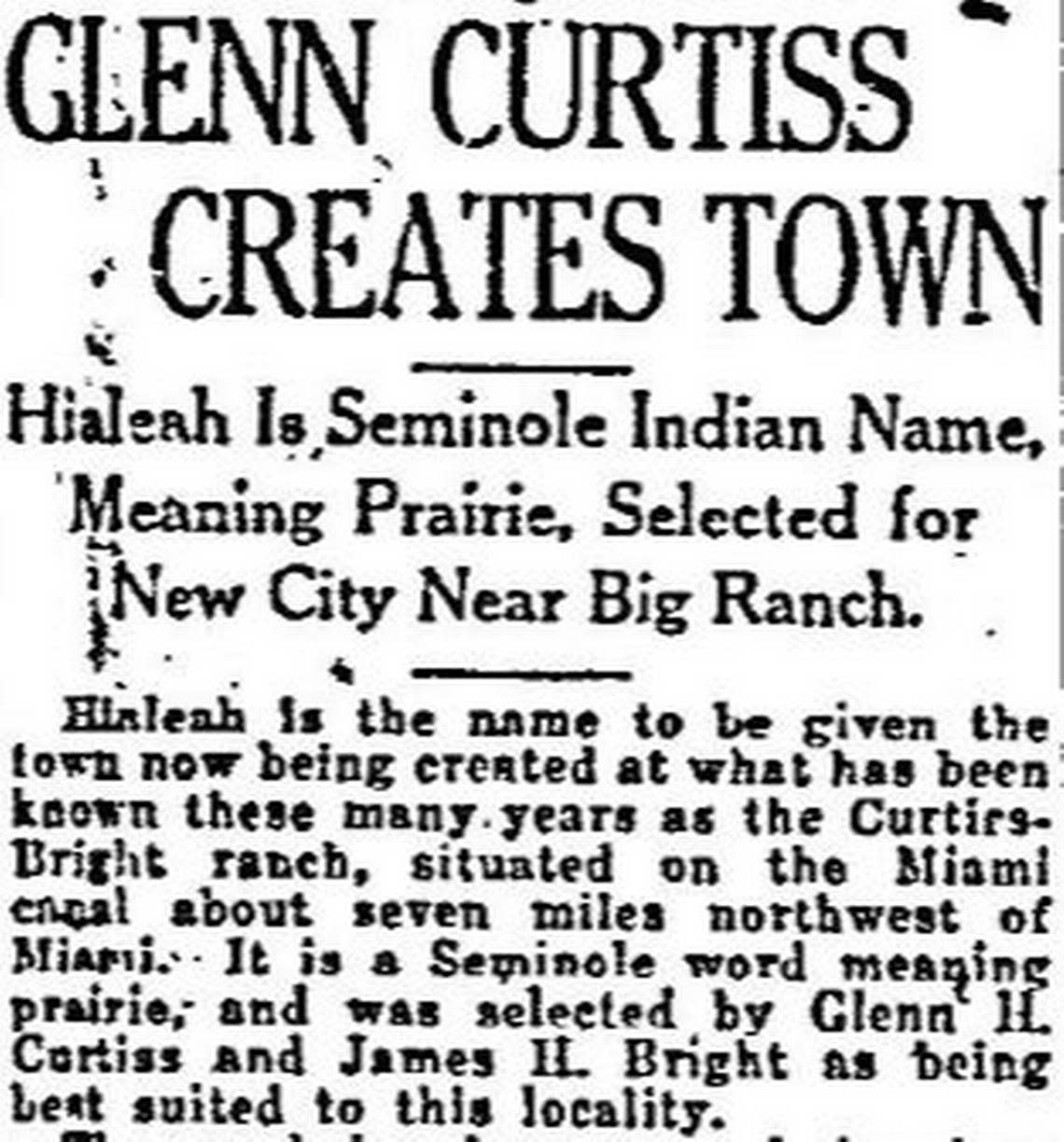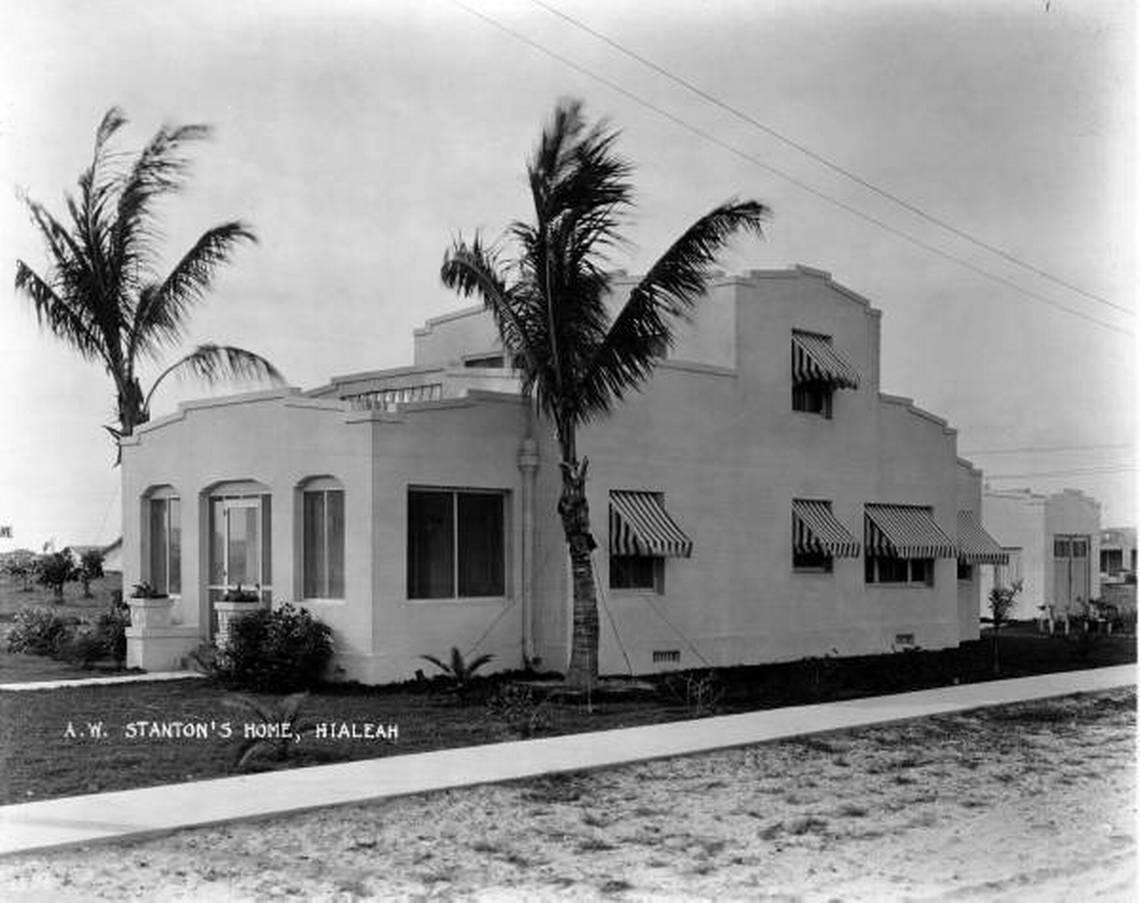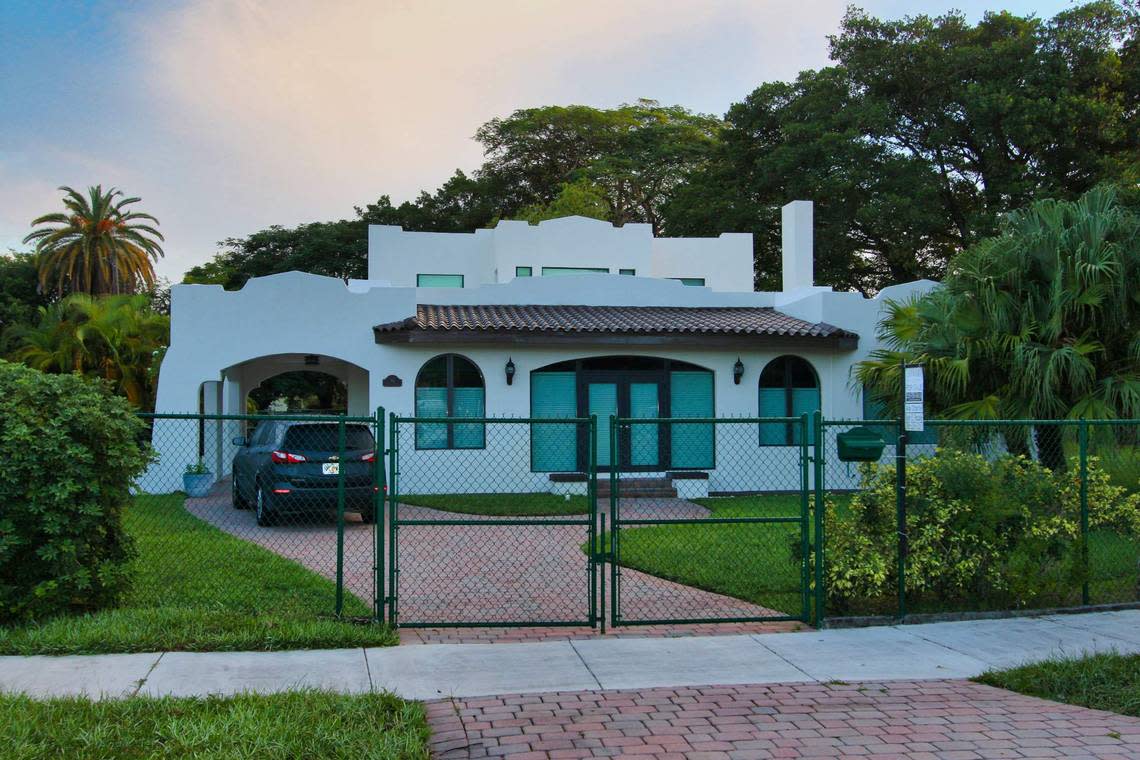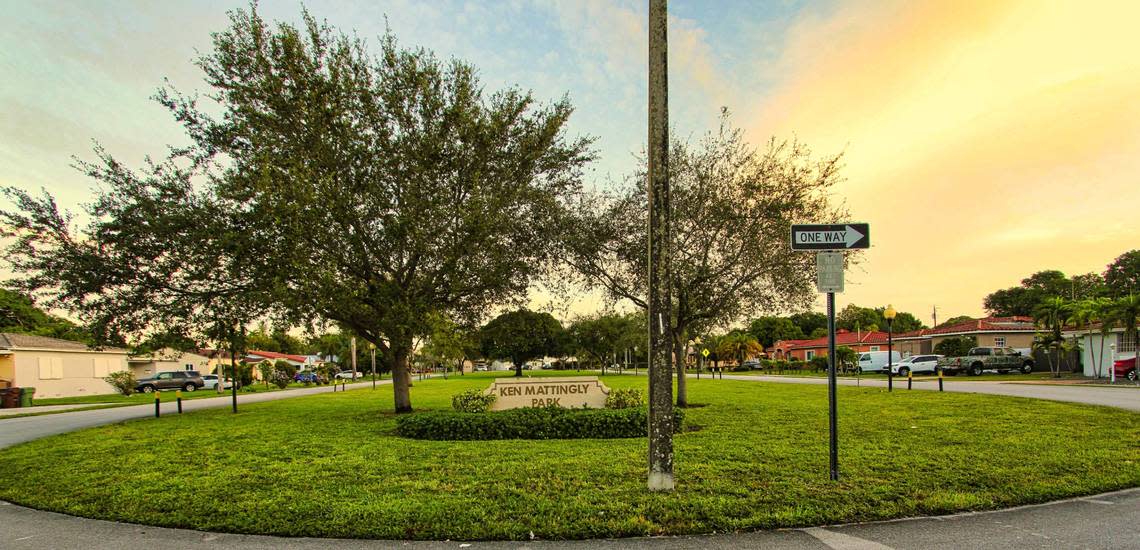James H. Bright house, which may be the oldest standing home in Hialeah, is about to be sold
The century-old home of one of Hialeah’s pioneer developers is about to be sold, according to county records.
The house, in the city’s historic Deer Park neighborhood, is the former home of James H. Bright, who helped shape the boundaries as well as fortunes of what would become Hialeah and Opa-locka.
The property, at 45 Olive Dr., is listed for sale at $849,990 and is currently “under contract” to a prospective buyer.
When Bright died at 93 in 1959, his obituary in the Miami News noted his many accomplishments. Among them: He was credited with being the first breeder of race horses in Florida, and had donated 160 acres of his land to found Hialeah Race Track. He also helped to make the state a leader in cattle production, and started the first dairy farm in this area. And when the city of Hialeah was incorporated in 1925, he selected the first mayor and councilmen for the city.
“The Bright home is so important because he was the first in modern times to own much of the future Hialeah,” said Miami historian Paul George. “Bright, along with Glenn Curtiss, were the developers of Hialeah.”
The current owners of the house are Wayne and Sonia Beckelheimer, according to the county’s appraiser’s database. The property has been sold three times in the past 100 years; its last sale was in 2001.
The Bright House is not listed on the National Register of Historic Places, according to Ruben Acosta, the registration supervisor for Florida’s Bureau of Historic Preservation. However, in 1990, Hialeah designated the site an historic landmark — four years before it caught fire and was subsequently renovated.
Role in Hialeah history
Originally from Missouri, James H. Bright purchased 17,000 acres in 1909, intending to create a huge cattle ranch. His plans for the land -- which would become Hialeah and Opa-locka -- pivoted to land sales, in 1916, after he met Curtiss, an aviation pioneer.
The duo formed Curtiss-Bright Corp., which initially offered for sale 700 lots on 185 acres in Hialeah. (Eventually, Curtiss-Bright’s 26.5-square-mile chunk of land was divided as follows: 22 square miles became the city of Hialeah, in 1925; and 4.5 square miles became the city of Opa locka, in 1926, records show.)

While brainstorming town names, Bright and Curtiss sought counsel from Willie Willie, an Indian chief who suggested the Seminole name for high, level prairie: “Hi-a-le-ah.”
“Bright is building home in Hialeah,” said the headline of a 1921 Miami Herald news report. “The workmen have the frame up and within a few weeks it is expected that it will be completed.”
Bright moved into his home at 45 Olive Dr., and a photograph taken by W.A. Fishbaugh in early 1922 appears to show a Ford Model T in the carport, and a soot-stained chimney. Fishbaugh’s photos have helped historians document Florida’s early real estate boom.
It is unclear how Bright built and moved into his home a year before a permit was issued, according to his 1923 county building permit obtained by the Herald through a public records request.
Bright’s home, though, probably wasn’t the first house built in Hialeah. The earliest was built a few years before, said Hialeah Librarian Adolfo Barandiaran, who works with the Hialeah History Digital Collection.
“The original homes of Hialeah were built in 1920 inside the Curtiss-Bright Ranch, but they were made of wood and were later demolished,” Barandiaran said. “The wooden homes were not documented or we do not have a record of them.”

Bright’s home has managed to avoid the fate of at least one other house built at about the same time nearby.
Some experts believe Curtiss-Bright treasurer A.W. Stanton’s house might even have been slightly older than Bright’s. But Stanton’s home no longer exists. The property is now a bank parking lot.
“To the best of my knowledge, the Bright House is the oldest standing home in Hialeah,” said George, a historian at HistoryMiami Museum.
Challenges to survival
Bright’s home also was almost destroyed through the years.
“House burned down Jan. 1, 1994, house is vacant at the present, boarded up,” the property’s former owners, James and Elizabeth Bunyard, said in a 1994 county valuation inquiry report.
At that time, the Bright House had 3,046 square feet, three bedrooms, and two baths. After the fire, the home’s assessed value was lowered from $26,805 to $100, Miami-Dade Property Appraiser records show. “It has been updated throughout the years,” said Charlie Leonard, the real estate listing agent.

The home now has 3,484 square feet, five bedrooms and three bathrooms, and sits on two-thirds of an acre, according to Leonard.
“I never thought as a first-grader at James H. Bright Elementary that I would one day sell his home,” Leonard said. (The school has since been renamed James H. Bright Elementary/J.W. Johnson Elementary.)

Indeed, the home is a jewel in the Deer Park neighborhood, which includes five of the city’s 16 landmarks and a nearby park named after one of its most famous past residents — Ken Mattingly, a former astronaut who flew Apollo 16 to the moon. Altogether, the neighborhood has a few dozen homes on about six un-numbered streets that include To-To-Lo-Chee, Pe-Na-Na, and Pash-E-Ho-Wa drives. It also has some of the biggest lots in Hialeah, as city Councilman Jesus Tundidor noted. “The architecture and esthetics of this area are completely different from the rest of the city.”
Tundidor, whose grandmother lived two doors down from the Bright House, said he played on the property when he was a youth.
At a recent council meeting, he mentioned the listing, and he said he hoped to see the neighborhood’s rich history be preserved.
